- HubPages»
- Education and Science»
- Life Sciences»
- Marine Biology
9 Sea Creatures That You'll Wish You Knew About Sooner
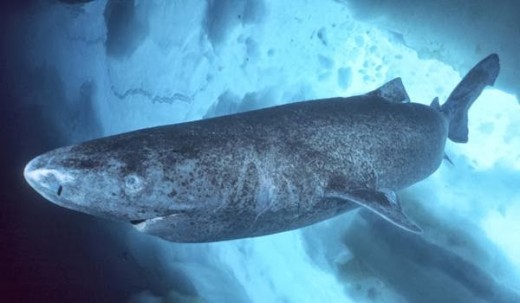
Greenland Shark
As pictured above, the Greenland Shark is one that can live longer than any other species of shark, which makes it quite extraordinary. Not only can it live to be 500 years old, but it can also be compared to the Great White Shark in size, as it can grow to reach up to 21 feet.
Another thing to note, would be their strange scavenging diet. Yes, they do feed on fish such as, other sharks, flounder, eel, cod, and many more fish that live in their ecosystem, but that's not what makes their diet odd. There have been Greenland Sharks found with the remains of polar bears, horses, seals, and even full reindeer in their stomachs. So not only are they ancient, but they're also risk takers.
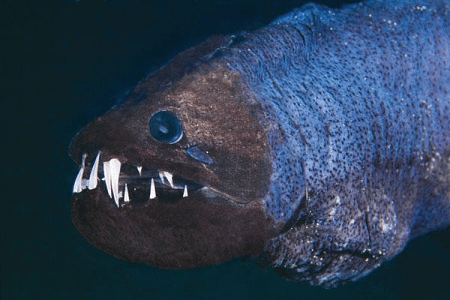
Obese Dragonfish
Not much is known about the Obese Dragonfish or their behavior, despite them having been discovered in 1878. What is known, however, is that they look like water dragons! Their razor sharp teeth is a dead giveaway, but they have something that makes them much more fantasy-like. All along their bodies, they have organs that generate light, renders them as bioluminescent, which is something that only a small fraction of known fish have. Other than these things, there is much more to be discovered about the elusive Dragonfish.
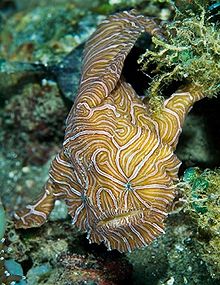
Psychedelic Frogfish
The Psychedelic Frogfish is named for the peculiar yellow and white marking that cover its body. When you look closely, its markings almost look like fingerprints. Unlike the Greenland Shark for its diet, or the Dragonfish for its appearance, the Frogfish has been mentioned due to its means of travel.
To start, the Psychedelic frogfish moves but using its fins to 'walk' across the ocean floor. Then, it pushes itself off of the ocean floor while forcing water through its gills in an action called 'jet propulsion'. While it does this, the Frogfish curls up into a ball and looks just like a bouncing ball on the ocean floor. Note, they probably wouldn't make good beach balls in all actuality.
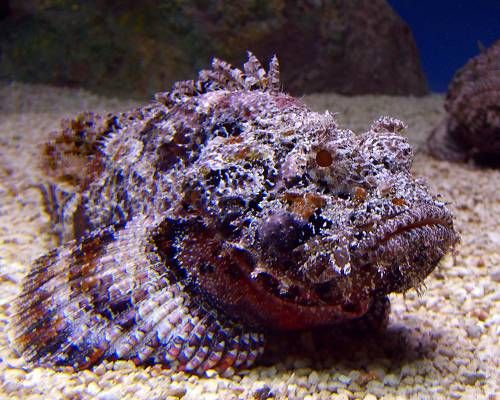
Stonefish
The Stonefish, or Synanceia, are one of the most venomous fish in the world. The venom, which is dispensed via their large dorsal fins, can lead to envenomation and death if the wounds don't get treatment right away. What makes them even more fearsome is that that can be mistaken for rocks and coral due to their appearance.
But despite their frightening reputation, they're actually a delicacy in the eastern parts of the world. Once their dorsal fins are removed, most of the venom gets taken away. To get rid of the rest of the venom, they are cooked with heat. On the other hand, they can also be eaten as sushi or sashimi. I'd make sure you know what you're eating next time you get sushi, I wouldn't want to take the chance of possibly eating a Stonefish.
Goblin Shark
The Goblin Shark, or 'living fossil', is a prehistoric deep sea creature dating back some 125 million years. They have long, flabby bodies that lead scientists to believe that they're generally slow moving creatures.
Above is a video featuring how the Goblin Shark feeds. As you can see, the Goblin Sharks jaw is able to extend as it feeds, almost resembling a snake as it swallows its prey whole. Luckily, they don't stray up to the coast, so you have virtually no chance of encountering one above a depth off 130 feet.

Angler Fish
There are many, many types of Angler Fish, but we'll be focusing on the species as a whole for this capsule to avoid making it too long and uninteresting.
The Angler Fish is a deceptive and ruthless predator, using the lack of intelligence in smaller fish to its advantage. Angler Fish have a fleshy growth that protrudes from the top of their heads and at the end of these growths are a bioluminescent organ that produces light. This light acts as a lure that mesmerizes fish, drawing them in so that they'll drift towards it. Before the fish has a chance to react, the Angler Fish strikes, consuming the fish while it's distracted by the Angler Fishes light.
If you thought that was messed up, stay tuned. Male Angler Fish cannot even begin to compare to female Angler Fish. They are substantially smaller than the females and never reach adulthood. The males will find females and attach to them until their flesh becomes one and the male grows into the female. This being said, if a male cannot find a female, it will die off. They participate in these disturbing relations because finding other Angler Fish is very rare, so to keep the population up, the male fuses to the female.
Why, Angler Fish, just why? Writing this was enough to give me nightmares.
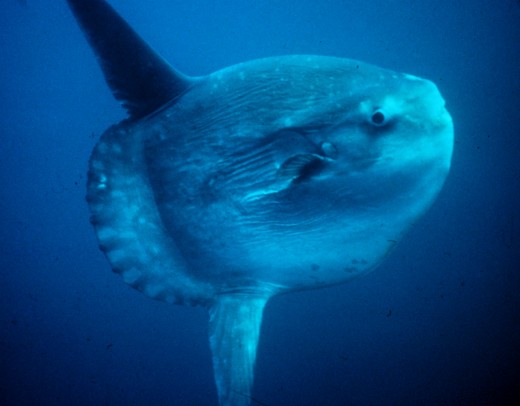
Mola Mola
The Ocean Sunfish, or Mola Mola, is the heaviest bony fish in the entire world. It can weigh up to 2,200 pounds, just a little over a ton. They don't really get that many predators, considering their size, but there are larger creatures that will feed on them. Seals, whales, and sharks are some of them.
Their size isn't why they've been featured here, however. The Ocean Sunfish actually holds a world record for laying the most eggs at one time. An adult female Sunfish can lay up to 300 million eggs in one sitting, which is more than any other vertebrate.
Not only do they lay massive amounts of eggs, but they're also voracious eaters. They mainly feed on jellyfish, which doesn't really offer that much nutrition the to large Sunfish, so they must eat ridiculous amounts to keep up with their large size.
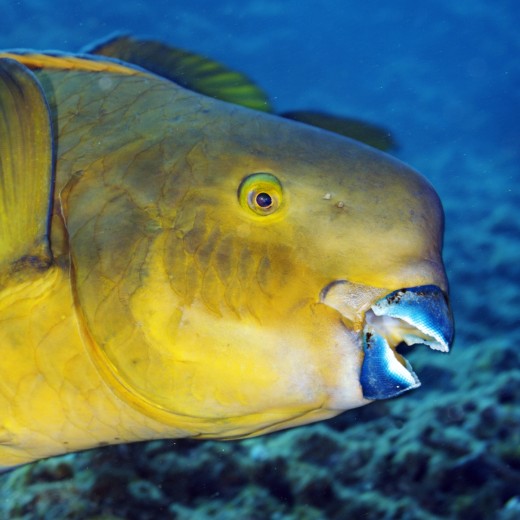
Parrotfish
The Parrotfish was given its name because of their teeth. Their teeth are tightly knit together, almost forming a very prominent beak on the fish. They are in fact, not related to birds in any way.
Parrotfish dung is mostly composed of tiny hard pieces of coral. This is due to their part in cleaning coral reefs and keeping them clean. But that isn't a part of the big picture. Basically, Parrotfish dispel sand from their bowls. This sand falls to the ocean floor and adds to the preexisting that's already there. That's something to think about next time you take a trip to the beach for you might just be walking amid Parrotfish feces.
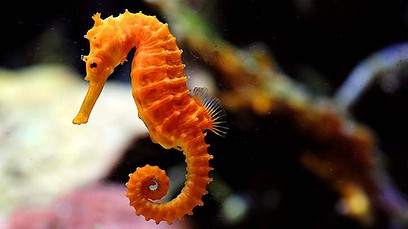
Seahorse
Hippocampus, the genus that seahorses fall into, directly translated to 'horse sea monster'. Seahorses earned their name because of how their heads and snouts greatly resemble that of horses. Something more to realize is that their eyes move separately, like a chameleons.
They swim up right, which is an uncommon characteristic among most sea dwelling creatures. They're also very poor swimmers. The Dwarf Seahorse only moves about 5 feet per hour, which is very sluggish. Since they can't swim all that well, they've been known to wrap their tails around sea plants and other stationary objects to keep themselves in place.
As if the rest wasn't weird enough, the males are actually the ones who give 'birth'. After performing courtship rituals that often last for multiple days, the female deposits her eggs into the male Seahorses pouch that he carries on his belly and then she swims off to do her own thing. After this, he will go on to hold them for 9 to 45 days, or until they're developed enough to be released. He will not watch them, nor with the mother, Seahorses are not caretakers for their young once they're birthed.
They may not be the best parents, but it's good to see the role reversal, even if it is just in the ocean.








